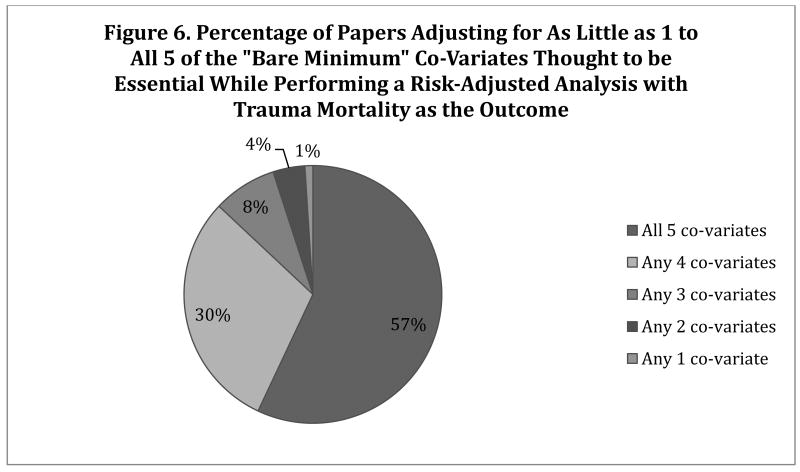Figure 6.
Percentage of papers adjusting for as little as 1 to all 5 for the “bare minimum” covariates thought to be essential while performing a risk-adjusted analysis with trauma mortality as the outcome. All 5 co-variates: 1) Mechanism of injury [includes controlling for different mechanisms, such as motor vehicle crash, fall, pedestrian struck, etc., or controlling for type of injury (blunt vs. penetrating)]; 2) Physiologic severity (includes controlling for any of the following: Systolic blood pressure, Revised Trauma Score, Respiratory Rate, Heart Rate, Trauma and Injury Severity Score, or Base Deficit) 3) Anatomy severity (includes: ISS, New ISS, Anatomic Profile (AP), TRISS, Abbreviated Injury Score for any region) 4) Age and 5) Sex. *n for 5 co-variates = 56; n for 4 co-variates = 29; n for 3 co-variates = 8; n for 2 co-variates = 4; n for 1 co-variate = 1.

